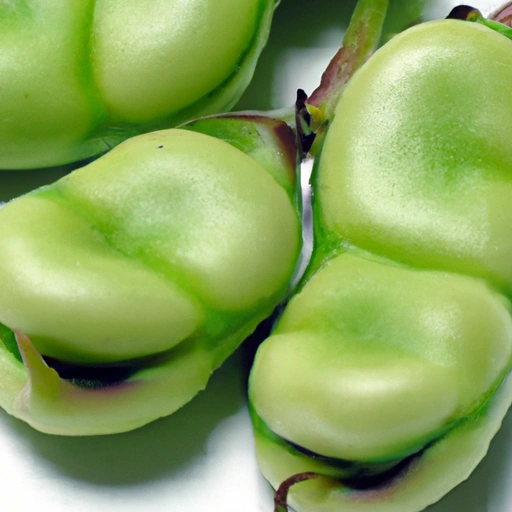Broad Bean
Description

The broad bean, also known as fava bean, is a hearty legume that grows in large, leathery pods, housing seeds that are enjoyed in cuisines around the world. With their pale green color and slightly sweet, earthy flavor, broad beans are a staple in many dishes, providing a nutritious boost and culinary versatility. They can be eaten raw, cooked, dried, or canned, and are commonly found fresh during the spring and summer months.
Common uses
Broad beans are commonly used in a wide range of dishes, from salads and soups to stews and purees. They are often paired with ingredients like ham, other vegetables, cheese, and fresh herbs to create delicious and wholesome meals. Broad beans can also be found as a staple in many traditional dishes, such as the Middle Eastern falafel, Italian fava bean puree, and the British classic, broad beans with bacon.
Nutritional value
Calories
Raw broad beans contain approximately 341 kcal per cup (170 grams), making them a hearty addition to any meal.
Protein
A cup of cooked broad beans provides around 13 grams (0.46 oz) of protein, which is essential for muscle growth and repair.
Fat
Broad beans are low in fat, with just 1.3 grams (0.05 oz) per cup of cooked beans, including healthy unsaturated fats.
Carbohydrates
Cooked broad beans contain about 33 grams (1.16 oz) of carbohydrates per cup, providing a good source of energy.
Vitamins
These beans are rich in vitamins, particularly folate (B9), with a cup of cooked beans providing nearly 44% of the Recommended Daily Allowance (RDA).
Minerals
Broad beans are a great source of minerals, offering manganese, potassium, iron, copper, and magnesium in significant amounts.
Health benefits
Consuming broad beans can offer numerous health benefits, such as improved cardiovascular health due to their high fiber and potassium content. They can also contribute to bone strength and help in managing weight, thanks to their protein and fiber content. Broad beans are known to support nervous system function because of their rich folate content.
Potential risks
For some individuals, broad beans can pose health risks, such as favism, a condition linked to a genetic enzyme deficiency leading to a negative reaction to the beans. Additionally, those on MAOI medication should avoid broad beans due to their high tyramine content.
Common recipes
Broad beans are used in a variety of recipes, including the classic Italian dish 'Fave e Cicoria', Middle Eastern 'Ful Medames', and Spanish 'Habas con Jamon'.
Cooking methods
They can be boiled, steamed, sautéed, or even eaten raw if young and tender. Dried broad beans are often soaked and cooked for use in various dishes.
Pairing with other ingredients
These beans pair well with strong flavors such as garlic, lemon, mint, and savory meats, enhancing their natural nuttiness.
Summary
Broad beans are a flavorful and nutritious ingredient with a rich historical background and a wide range of culinary applications. They are enjoyed across various cuisines and can be prepared using multiple cooking methods. Whether incorporated into a hearty stew or enjoyed as a simple side dish, broad beans offer both health benefits and delightful taste to any meal.